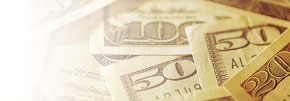|
|
Identity Theft
How Identity Theft Occurs
Skilled identity thieves use a variety of methods to gain
access to your personal information. For example:
- They get information from businesses or other
institutions by:
- stealing records from their employer,
- bribing an employee who has access to these records,
or
- hacking into the organization’s computers.
- They rummage through your trash, or the trash of
businesses or dumps in a practice known as “dumpster
diving.”
- They obtain credit reports by abusing their
employer’s authorized access to credit reports or by
posing as a landlord, employer, or someone else who may
have a legal right to the information.
- They steal credit and debit card numbers as your
card is processed by using a special information storage
device in a practice known as “skimming.”
- They steal wallets and purses containing
identification and credit and bank cards.
- They steal mail, including bank and credit card
statements, pre-approved credit offers, new checks, or
tax information.
- They complete a “change of address form” to divert
your mail to another location.
- They steal personal information from your home.
- They scam information from you by posing as a
legitimate business person or government official.
Once identity thieves have your personal information,
they may:
- Go on spending sprees using your credit and debit card
account numbers to buy “big-ticket” items like computers
that they can easily sell.
- Open a new credit card account, using your name, date of
birth, and SSN. When they don’t pay the bills, the
delinquent account is reported on your credit report.
- Change the mailing address on your credit card account.
The imposter then runs up charges on the account. Because
the bills are being sent to the new address, it may take
some time before you realize there’s a problem.
- Take out auto loans in your name.
- Establish phone or wireless service in your name.
- Counterfeit checks or debit cards, and drain your bank
account.
- Open a bank account in your name and write bad checks on
that account.
- File for bankruptcy under your name to avoid paying debts
they’ve incurred, or to avoid eviction.
Give your name to the police during an arrest. If they are
released and don’t show up for their court date, an arrest
warrant could be issued in your name.
If Your Identity’s Been Stolen
Even if you’ve been very careful about keeping your personal
information to yourself, an identity thief can strike. If
you suspect that your personal information has been used to
commit fraud or theft, take the following four steps right
away. Remember to follow up all calls in writing; send your
letter by certified mail, return receipt requested, so you
can document what the company received and when; and keep
copies for your files.
- Place a fraud alert on your credit reports and review
your credit reports. Also place a fraud alert on your name
and Social Security Number.
Call the toll-free fraud number of anyone of the three major
credit bureaus to place a fraud alert on your credit
report.This can help prevent an identity thief from opening
additional accounts in your name. As soon as the credit
bureau confirms your fraud alert, the other two credit
bureaus will automatically be notified to place fraud alerts
on your credit report, and all three reports will be sent to
you free of charge.
Equifax — To report fraud, call:
1-800-525-6285, and write: P.O. Box 740256, Atlanta, GA
30374
Experian — To report fraud, call:
1-888-EXPERIAN (397-3742), and write: P.O. Box 2002, Allen,
TX 75013
TransUnion — To report fraud, call:
1-800-680-7289, and write: Fraud Victim Assistance Division,
P.O. Box 6790, Fullerton, CA 92834-6790
Social Security Administration (fraud line):
1-800-269-0271
Once you receive your reports, review them carefully. Look
for inquiries you didn’t initiate, accounts you didn’t open,
and unexplained debts on your true accounts. You also should
check that information such as your SSN, address(es), name
or initial, and employers are correct. Inaccuracies in this
information also may be due to typographical errors.
Nevertheless, whether the inaccuracies are due to fraud or
error, you should notify the credit bureau as soon as
possible by telephone and in writing. You should continue to
check your reports periodically, especially in the first
year after you’ve discovered the theft, to make sure no new
fraudulent activity has occurred. The automated “one-call”
fraud alert process only works for the initial placement of
your fraud alert. Orders for additional credit reports or
renewals of your fraud alerts must be made separately at
each of the three major credit bureaus.
- Close any accounts that have been tampered with or opened
fraudulently.
Credit Accounts
Credit accounts include all accounts with banks, credit card
companies and other lenders, and phone companies, utilities,
ISPs, and other service providers.
If you’re closing existing accounts and opening new ones,
use new Personal Identification Numbers (PINs) and
passwords.
If there are fraudulent charges or debits, ask the company
about the following forms for disputing those transactions:
- For new unauthorized accounts or existing
accounts, ask the representative to send you the
company's fraud dispute forms.
- If your ATM card has been lost, stolen or otherwise
compromised, cancel the card as soon as you can. Get a new
card with a new PIN.
Checks
If your checks have been stolen or misused, close the
account and ask your bank to notify the appropriate check
verification service. While no federal law limits your
losses if someone steals your checks and forges your
signature, state laws may protect you. Most states hold the
bank responsible for losses from a forged check, but they
also require you to take reasonable care of your account.
For example, you may be held responsible for the forgery if
you fail to notify the bank in a timely way that a check was
lost or stolen. Contact your state banking or consumer
protection agency for more information.
You also should contact these major check verification
companies. Ask that retailers who use their databases not
accept your checks.
TeleCheck — 1-800-710-9898 or 927-0188
ChexSystems — 1-800-328-5121
SCAN (1-800-262-7771) to find out if the identity thief has
been passing bad checks in your name.
- File a report with your local police or the police in the
community where the identity theft took place.
Keep a copy of the report. You may need it to validate your
claims to creditors. If you can’t get a copy, at least get
the report number.
- File a complaint with the FTC.
By sharing your identity theft complaint with the FTC, you
will provide important information that can help law
enforcement officials track down identity thieves and stop
them. The FTC also can refer victim complaints to other
appropriate government agencies and companies for further
action. The FTC enters the information you provide into
their secure database.
To file a complaint or to learn more about the FTC’s Privacy
Policy, visit (www.ftc.gov/idtheft). If you don’t have
access to the Internet, you can call the FTC’s Identity
Theft Hotline: toll-free 1-877-IDTHEFT (438-4338); TDD:
202-326-2502; or write: Identity Theft Clearinghouse,
Federal Trade Commission, 600 Pennsylvania Avenue, NW,
Washington, DC 20580.
What is Phishing and Pharming?
The FBI has identified "Phishing" -- when criminals send
fake e-mails requesting personal information -- as one of
newest and most disturbing Internet scams.
Criminals send legitimate-looking e-mails that appear to
come from well known sites like MSN, Yahoo and American
Online with bogus requests for personal information like
bank account information and credit card numbers. The
messages often claim that billing information needs to be
updated.
The FTC recommends the following steps to help avoid 'phishing'
scams:
- Don't click on a link in an e-mail that warns your account
will be shut down unless you reconfirm billing information.
Contact the legitimate company using a phone number or Web
address.
- Look for a padlock icon that signals a site is secure
before e-mailing personal and financial information and be
sure to regularly review your credit card and bank
statements for unauthorized charges.
Phishing attacks use both social engineering and technical
subterfuge to steal consumers' personal identity data and
financial account credentials. Social-engineering schemes
use 'spoofed' e-mails to lead consumers to counterfeit
websites designed to trick recipients into divulging
financial data such as credit card numbers, account
usernames, passwords and social security numbers. Hijacking
brand names of banks, e-retailers and credit card companies, phishers often convince recipients to respond. Technical
subterfuge schemes plant crimeware onto PCs to steal
credentials directly, often using Trojan keylogger spyware.
Pharming crimeware misdirects users to fraudulent sites or
proxy servers, typically through DNS hijacking or poisoning.
Consumer Advice: How to Avoid Phishing Scams
To learn more about Spyware and how to protect against it
click on the link below:
www.us-cert.gov/cas/tips/ST04-016.html
How to protect your computer
Please follow these links to learn more about how you can
protect your computer from being compromised:
www.microsoft.com/athome/security
Also check with your Anti-Virus vendor and be sure to always
have the latest Virus definitions loaded on your computer.
To learn more about how important Bank of Commerce thinks
your information is click
here to
read our Privacy Policy.
Tips to Avoid Identity Theft
- The next time you order checks have only your initials
(instead of first name) and last name printed on them. If
someone takes your checkbook they will not know if you sign
your checks with just your initials or your first name but
your bank will know how you sign your checks.
- When you are writing checks to pay your credit card
accounts, DO NOT write the complete account number on the
"For" line. Instead, write just the last four numbers. The
credit card company knows the rest of the number and anyone
who might be handling your check as it passes through all
the check processing channels won't have access to it.
- Print your work phone number on your checks instead of
your home phone.
- Never have your Social Security number printed on your
checks. You can add it if it is necessary, but if you have
it printed, anyone can get it.
- Do not carry your Social Security card in your wallet or
allow it to be used as your driver's license number.
- Place the contents of your wallet on a photocopy machine
and copy both sides of each license, credit card, etc. Keep
the photocopy in a safe place. You will know what you had in
your wallet and all of the account numbers and phone numbers
to call and cancel.
- Carry a separate photocopy of your passport when you
travel either here or abroad.
- Shred unused, pre-approved credit offers you receive in
the mail. Also shred any discarded monthly statements.
|
Lost/Stolen Phone Numbers
ATM/Check Card
1-800-554-8969 (U.S.)
1-973-682-2652 (International)
VISA Credit Card
1-800-325-3678
|

|
|



